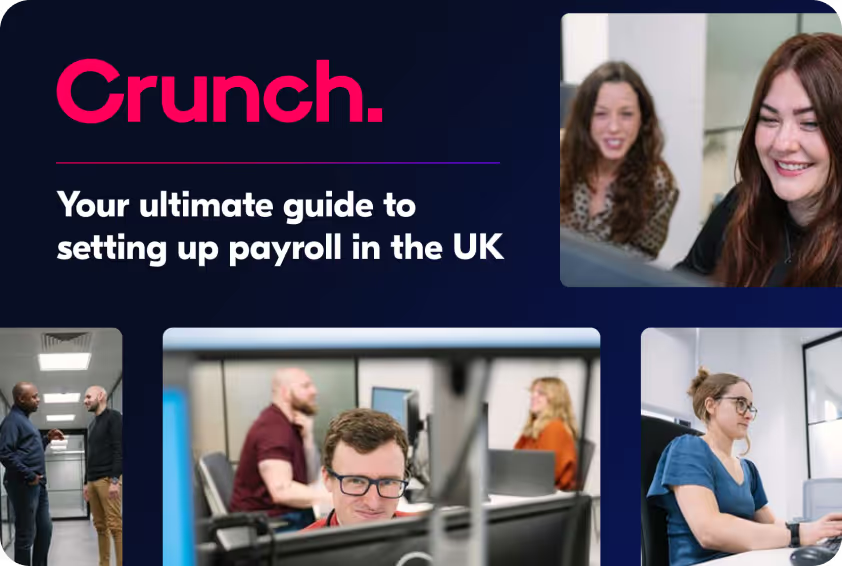There are few certainties in life, but the late Benjamin Franklin named taxes as one of them. For most UK workers and businesses, that's certainly true. However, the way those taxes are calculated has recently undergone some of the most significant changes in a generation, particularly for the self-employed.
As an employee, tax is generally calculated and deducted automatically through PAYE. For sole traders and partners in a business, tax is a more complex matter. Recent reforms to accounting methods and how profits are assessed mean that staying up-to-date is more critical than ever.
Before you can pay any tax, you need to work out how much you owe. Most personal taxes, such as Income Tax and National Insurance, aren't charged on your total business turnover. Instead, they are based on your taxable income, a figure you arrive at after first calculating your business's taxable profit.
Understanding the journey from business profit to personal taxable income is vital. This guide will walk you through the key concepts and recent changes, including the new tax-year basis and updated cash basis accounting rules.
Please note: we're focusing on personal taxes for sole traders and partnerships, such as Income Tax. While the concept of taxable profit is also the starting point for Corporation Tax in a limited company, the rules for calculating it and the taxes applied are different.
Understanding the key terms
To work out your tax liability, you need to be clear on a few key terms that have very specific meanings for HMRC.
- Trading Profit: The profit a business makes from its trading activities. It's calculated by subtracting allowable business expenses from your total sales or turnover.
- Taxable Profit: This is the figure you get after adjusting your trading profit for tax purposes. This involves adding back any 'disallowable' expenses and deducting any available capital allowances. For sole traders, this figure is the starting point for your personal tax calculation.
- Total Income: Also known as gross income, this is all of your income from all sources within a tax year. It includes your business's taxable profit, plus any other earnings from employment, dividends, savings interest, or property.
Taxable Income: This is the final figure your tax is calculated on. It's your total income after you've deducted any tax reliefs (like for pension contributions) and your tax-free Personal Allowance.
{{tax-guide}}
Preparing business accounts to calculate taxable profit
To calculate your taxable profit, you first need to prepare your business accounts. For sole traders and partnerships, there are two main methods for this: cash basis and traditional (accrual) accounting.
Cash basis accounting
Cash basis accounting only counts income and expenses actually paid within the accounting period. It doesn’t matter if you’ve sent an invoice in that period – only that it has been paid. This system is generally preferred for small businesses as it is simpler to account for, though it is only available to specific types of businesses.
From the 2024/25 tax year, the rules have changed significantly, making this the default method for most unincorporated businesses. Key changes include:
- No turnover threshold: The previous entry limit of £150,000 has been removed, making it available to more businesses.
- It's the default: Eligible businesses will use the cash basis by default unless they make an election to use accrual accounting.
- Interest and loss relief restrictions removed: The previous £500 cap on deducting interest and finance costs has been removed, and the rules for relieving trading losses are now aligned with the accruals basis.
However, some businesses are not permitted to use the cash basis, including limited companies, LLPs, and businesses that have made certain claims like the herd basis for farming or Research and Development Allowance.
Accrual (traditional) accounting
Accrual accounting records income and expenses when they are incurred, not when they are paid. As soon as you issue an invoice or receive a bill, it's recorded in your accounts. This method gives a more accurate picture of a business's financial health over a period but can mean you owe tax on income you haven't yet received. If you are not eligible for the cash basis, or you choose to opt out, you must use this method.
The new tax-year basis: How your profits are assessed
A fundamental change for all sole traders and partnerships is the move to the 'tax-year basis' of assessment, which took full effect from 6 April 2024.
Previously, your taxable profit for a tax year was based on the profit from your business's accounting period that ended in that tax year. This created complex 'basis period' rules and 'overlap relief'.
Under the new system, your taxable profit for a tax year is simply the profit that arises between 6 April and 5 April. This reform simplifies tax calculations by aligning your profit reporting directly with the tax year, eliminating the complexities of basis periods and overlap relief going forward. The 2023/24 tax year was a transitional year to align all businesses to this new basis.
Calculating your taxable profit
Once you've chosen your accounting method, the process of calculating taxable profit involves identifying your allowable expenses and accounting for any capital expenditure.
What are allowable expenses?
Allowable expenses are costs you can deduct from your income to calculate your trading profit. To be allowable, the expense must be incurred 'wholly and exclusively' for business purposes. You must keep records and receipts as proof.
Common allowable expenses include:
- Stock or raw materials
- Travel costs like fuel, parking, and public transport fares
- Office costs, including phone bills, broadband, and stationery
- Rent, rates, power, and insurance for your business premises
- Staff salaries and subcontractor costs
- Financial costs like bank charges and insurance
- Marketing and advertising costs
- Business-specific clothing, such as a uniform or protective gear
Accounting for capital expenditure
How you get tax relief for capital expenditure—spending on assets you buy to keep and use in your business—depends on your accounting method.
- Accrual basis: You generally can't deduct the full cost of a capital asset as an expense. Instead, you claim tax relief through capital allowances, which spread the asset's cost over time.
- Cash basis: The rules are simpler. You can usually deduct the full cost of most capital equipment as an allowable expense in the year you buy it. The main exceptions are cars, land, and buildings, which are treated differently.
Let's look at a simplified example for a business using the accruals basis:
Now, we adjust this trading profit for capital allowances. If the business bought £2,000 of computer equipment eligible for 100% capital allowances, the calculation would be:
The £15,200 figure is the business's taxable profit. For a sole trader, this is the amount that will be carried over to their personal tax calculation.
{{cta-newsletter}}
From taxable profit to personal taxable income
Your business's taxable profit is not the final amount you pay tax on. It's one component of your total income. To find your final taxable income, you need to follow these steps:
- Calculate Total Income: Add your business's taxable profit to any other income you have received in the tax year (e.g., salary from a job, dividends, rental income).
- Calculate Adjusted Net Income: From your total income, deduct any eligible tax reliefs, such as personal pension contributions or Gift Aid donations. The result is your 'adjusted net income'.
- Deduct your Personal Allowance: You can earn a certain amount of income each year tax-free. This is your Personal Allowance, which for the 2025/26 tax year is £12,570. However, this allowance has been frozen and is scheduled to remain at this level until April 2028, which may push more people into higher tax bands as incomes rise.
The final figure after deducting your Personal Allowance is your taxable income. This is the amount used to calculate your Income Tax.
What if you run multiple businesses?
If you are a sole trader with more than one business, you must calculate the taxable profit or loss for each one separately. You then add these figures together to get a total taxable profit from self-employment, which you include in your total income calculation.
The future of tax reporting: Making Tax Digital (MTD)
The recent reforms to the cash basis and basis periods are designed to pave the way for Making Tax Digital for Income Tax Self Assessment (MTD for ITSA).
Starting from 6 April 2026, sole traders and landlords with a combined gross income over £50,000 will be required to keep digital records and send quarterly updates to HMRC using compatible software. This threshold is set to reduce to £30,000 from April 2027. The move to a tax-year basis and the simplification of the cash basis are intended to make this new quarterly reporting system more manageable for businesses.

.svg)



.webp)












